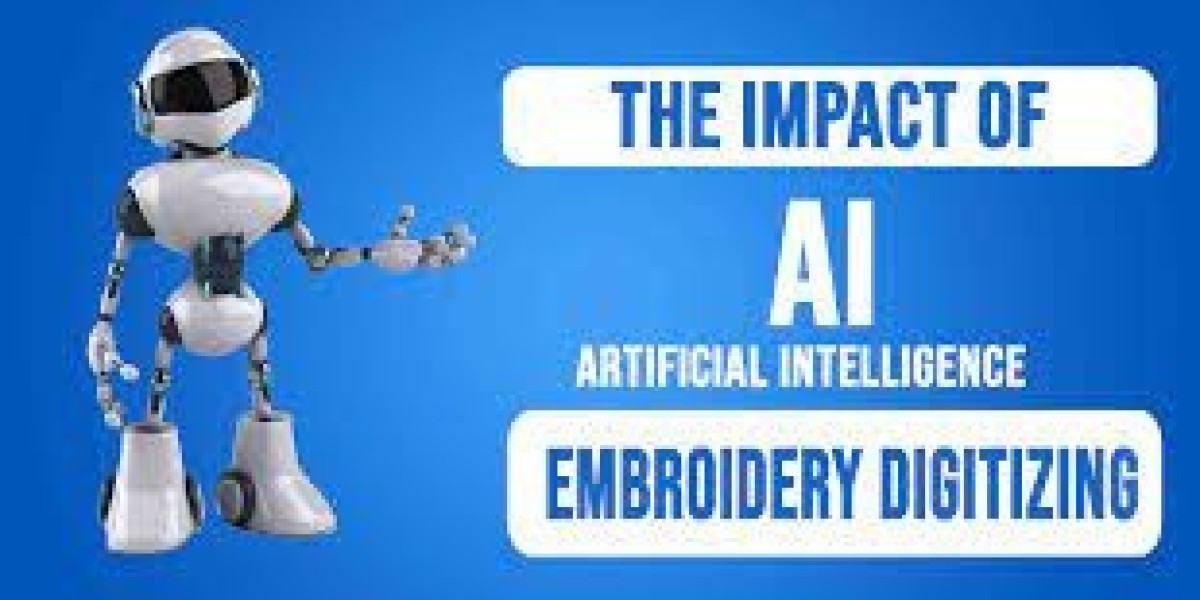Introduction
As industries worldwide embrace digital transformation, embroidery is not being left behind. From traditional manual methods to complex machine-guided stitches, embroidery has entered a new era—driven by AI-enhanced digitizing services. These services are rapidly redefining how designs are converted into machine-readable formats, enabling precision, customization, and unmatched efficiency.
In this article, we’ll explore how AI-integrated digitizing services are revolutionizing embroidery workflows, what benefits they offer, and why early adoption can give your business a serious competitive edge.
What Are Digitizing Services?
Digitizing services convert logos, illustrations, or any artwork into stitch files that embroidery machines can understand. These files tell the machine how to stitch each element—down to the direction, density, and type of stitch. Traditionally, skilled professionals would do this manually, but AI and automation are now enhancing or replacing many of these steps.
Evolution of Digitizing Services
The Manual Era
In the early 20th century, embroidery was entirely hand-done. The first semi-automated embroidery machines still required human input to guide stitching patterns.
Computerized Stitching
By the 1980s and 90s, digitizing software emerged, reducing human labor while allowing complex designs to be embroidered quickly.
The Rise of AI-Powered Digitizing
Now, we’re entering a phase where machine learning and AI algorithms help digitizing software automatically analyze images, optimize stitch paths, and even detect errors in real-time.
How AI is Transforming Digitizing Services
1. Image Recognition and Smart Conversion
AI can convert even low-quality images into precise stitch-ready files, recognizing edges, gradients, and tiny design elements better than traditional software.
2. Predictive Stitch Mapping
AI predicts the best stitch type and direction for each section of the design based on the fabric and thread being used.
3. Automatic Error Detection
Modern systems detect common digitizing issues like overlapping stitches, tension problems, and thread breaks—before they become costly production mistakes.
4. Adaptive Learning Algorithms
With each design processed, the software "learns" and improves, leading to smarter digitizing over time.
Key Advantages of AI-Driven Digitizing Services
Faster Turnaround: Reduce processing time by 60–70%
High Precision: Fewer errors and cleaner final designs
Bulk Processing: Perfect for businesses handling hundreds of custom orders
Cost-Efficiency: Lower operational costs in the long run
Scalable Customization: Enables mass personalization with minimal manual effort
Use Cases Across Industries
Fashion Brands
AI allows fast digitization of new seasonal designs without the usual back-and-forth.
Sports Teams
Perfect for logos, player names, and numbers at bulk scale.
Corporate Apparel
Custom uniforms with company branding benefit from faster digitizing and consistent stitching quality.
Promotional Product Companies
Fast turnaround is crucial—AI makes same-day digitizing more realistic.
Future Innovations in Digitizing Services
AI + Augmented Reality
Imagine previewing embroidery on a garment through AR before it’s ever stitched.
Voice Command Design
Say “digitize eagle logo for cotton hoodie,” and AI gets it done.
Blockchain Integration
For copyright protection and tracking design ownership.
Integration with E-commerce Platforms
Real-time digitizing and stitching previews for online customers ordering custom gear.
How to Select the Right Digitizing Service
AI Capabilities – Does the service offer real-time error detection and adaptive learning?
File Format Support – DST, PES, EXP, JEF, and more
Customization Options – Can it handle raised stitching, 3D puff, etc.?
Customer Service – Look for tutorials, support, and updates
Top AI-based platforms:
Wilcom Hatch
Embrilliance
SewArt
Ink/Stitch (open-source)
Success Story: A Patch Company Goes Smart
Business: Custom Patch Studio – California
Problem: High rejection rate due to errors in manually digitized designs
Solution: Integrated AI-based digitizing platform
Results:
Order errors reduced by 80%
Production time cut in half
Customer satisfaction increased from 4.2 to 4.8 stars
Tips for Businesses Adopting AI Digitizing
Start small: Use AI tools on basic designs first
Train your staff: Familiarize with features for faster implementation
Track KPIs: Monitor time saved, quality improvement, and cost benefits
Promote your capabilities: Use “AI-enhanced” as a marketing edge
Conclusion
Digitizing services have always been the backbone of machine embroidery—but now, they’re getting smarter. AI is revolutionizing how designs are interpreted, optimized, and delivered, offering embroidery businesses a chance to move faster, produce better, and customize at scale. Whether you’re a solo artist or a high-volume vendor, adopting AI-powered digitizing services can future-proof your embroidery workflow.
FAQs
Q1: Are AI digitizing services expensive? They can be affordable, with tiered pricing for small and large businesses.
Q2: Can I use AI software with older machines? Most AI tools export in standard formats like DST or PES, making them compatible.
Q3: Is training required to use these platforms? Basic training helps, but many tools are user-friendly and have great support.
Q4: Can AI handle gradient effects and 3D puff? Yes, advanced tools support complex design elements.
Q5: Where do I find reliable AI-based digitizing platforms? Look for trusted names like Wilcom, Embrilliance, and Hatch with proven reviews.






